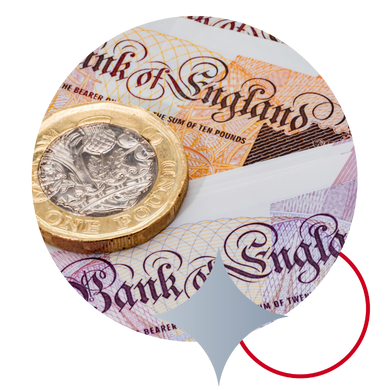Weekly Brief

50bps from the ECB, but what next from the FOMC and BoE?
13 minute read17 March 2023
GBP
In any normal week, the UK Budget would make major headlines for markets. This week being what it was, the Budget* came and went without too much of a fuss, and this may be party due to the fact that the Chancellor pretty much stuck to expectations in terms of changes as he outlined his plans for growth. For any of you who may have missed the details, and as expected, the previously announced increase in corporation tax from 19% to 25% was carried through. In other tax benefits, Hunt froze fuel duty for another year, scrapped the lifetime allowance on tax-free pension contributions and extended the government’s help with energy bills for another three months.
Chancellor Hunt also stated that the OBR (office of budget responsibly) now think that the UK will avoid a recession this year. That statement looks realistic given the recent news that growth exceeded estimates, yet again. It is also quite an achievement given how downbeat expectations were for the UK economy, just a few months ago. In other news, the recent trend of stronger than expected UK economic data continues, with the latest employment report highlighting that key ILO unemployment remained at 3.7%, having been expected to have risen to 3.8%.
Despite all of this, next week’s BoE meeting now has an air of mystery around it, given events elsewhere. The chances of a halt in rate rises from the BoE have increased substantially since Monday, but as we have said on the FOMC (see USD) we will have to wait and see how markets settle before the meeting, and then what the BoE ultimately think about it all.
As for the pound, well the broader pound has had a sterling week, with GBP/EUR rising to a two-month high, and posting steady gains elsewhere, as the risks of a UK economic underperformance diminish considerably. GBP/USD has also remained above 1.2000, yet below 1.2200, which is also a fairly solid return for the pound, given the moves in favour of the safe-haven dollar elsewhere.
*Read our key takeaways from the Spring Budget
Thoughts from the dealing desk
“As global inflation relaxes, the focus for FX market movement has started to shift away from interest rate hikes and back on to economic performance. On Wednesday, Chancellor Jeremy Hunt’s budget did its job in calming the markets and caused a rally for sterling, with GBP/EUR up to a 2-month high. For investors, despite a forecasted 0.2% contraction this year, the positivity surrounding hopes of no recession in 2023, plus growth of 1.8% and 2.5% in the following years, was enough to support the plucky risk-off pound. Concerns around unemployment kept the currency from spiking significantly, but for GBP/EUR clients who have seen just 3 cents of market movement in the past three months, I am sure the GBP sellers will at least be happy that markets are starting to move in their favour. For next week, Monday and Tuesday will be quiet on the economic data front. However, Wednesday will provide the latest US interest rate decision from the Federal Reserve, followed by the Bank of England equivalent on Thursday. A raft of inflation data will then arrive for the UK, Europe, and the US at the end of the week, so expect choppier trading than usual. For an update from your dedicated account manager on your latest trading position, please reach out to us today. ”
This commentary does not constitute financial advice’
-Sam Mills, Private Dealing Manager
EUR
In a much anticipated move, the ECB raised Euro area rates by 50bps from 2.5 to 3% yesterday, resolutely sticking to their forward guidance. Several members within the ECB had voted for a pause, according to Christine Lagarde. However, the hike came after a week of heightened market turbulence, with bank stocks in particular coming under intense selling pressures, after the SVB crisis morphed into a broader run on supposedly vulnerable assets. In Europe, Credit Suisse was forced into seeking a CHF50bn lifeline from the Swiss National Bank (SNB), with part of the package including the buyback of CHF3bn of their debt, as the bank attempted to boost liquidity and calm nervous investors. The SNB are set to announce their latest interest rate decision next week.
Despite the ECB telling us otherwise, their latest hike was no forgone conclusion, with markets also clearly split on whether it would be the right move from the ECB. Fighting inflation is one thing, but if the ECB are raising rates into an economy that suddenly falls off a cliff, then they could be forced to reverse their decision fairy quickly, as inflation will quickly take care of itself in that environment. Of course, were they to have paused yesterday, then a nervous market could rightly question whether the ECB knew more than the rest of us, and that itself could have then led to further market disruption. Darned if you do, darned if you don’t. The ECB did remove the line suggesting that they will ‘keep raising interest rates at a steady pace’, from their accompanying statement, which is a clear sign that yesterday may be the last hike for a while, which makes sense to us. The immediate market reaction has been fairly positive, but these are early days, and we are not out of the woods yet.
As for the single currency, well EUR/USD has remained at the mercy of the broader dollar moves, despite remaining within a 1.0500 – 1.0700 range for the most part. If markets settle, then a break above on the topside looks favoured, however, this fluid backdrop makes short-term directional outcomes far harder to call. As for key data, next week is dominated by regional PMI data, assuming that markets move on and revert back to focussing on the numbers again.
USD
After a weekend of intense negotiations, the Fed and Treasury put a plan together to help stabilise the regional US banks, after the collapse of SVB and Signature Bank. As part of the package, banks can now tap into a new Fed lending facility, which allows them to mark risky underperforming assets at par with the Fed for the next year, in a facility which is also backed by the Treasury. The FDIC and state regulators in California also moved to protect all deposit holders of SVB, regardless of size their deposits. The combined moves helped to stabilise regional banks in the early part of the week, however, First Republic Bank then became the next bank to come under selling pressures later in the week, after it emerged that they had to seek emergency funding from JP Morgan over the weekend. News broke later yesterday, that First Republic will be receiving around $30b in deposits (from other banks) in an attempt to shore-up its balance sheet. Cue market rally.
Assuming that markets settle for longer than ten minutes, the fallout of this crisis will leave many questions. For instance, Jay Powell was speaking before congress just last week, suggesting that the Fed may need to hike US rates at a faster pace, implying that he was none the wiser to the events unfolding at SVB. There also remain many questions around regulation and overall liquidity provisions. Whilst the authorities have also worked hard to help regional banks, it also remains to be seen whether deposit holders will ultimately seek the relative safety of larger banks to stash their hard-earned cash.
As for the rest of the week, well the latest US data highlighted that inflation rose 6% (YoY) last month, following a 0.4% increase from the previous month. That is a decent decline from 6.4% (YoY) during January. Core CPI climbed by 0.5% over the past month, which was above expectations of a 0.4% increase. The annual pace slipped by 0.1% from 5.6%. Core PPI increased by 4.4% from 5.2% previously, with headline PPI increasing by 4.65, from 5.4%. The key Retail Sales Control Group increased by 0.5% over the past month, as consumers remained active. For once, the data made little difference through this week, given events elsewhere.
The dollar has also had an eventful week, with the key dollar index (DXY) initially moving lower as the SVB crisis unfolded, but then rebounded later in the week, as broader risk aversion accelerated. The overall range has been between 103.00 and 105.00. Amongst the major dollar pairs, USD/JPY has understandably been highly volatile, with the yen becoming a sanctuary for investors in this time of uncertainty, slipping from over 136.00 last Friday, to reach a low of just under 132.00.
Looking ahead, we have the small issue of the FOMC meeting next week to navigate. Markets have been quick to re-price rate hike expectations across the board, which is fully understandable. However, and in spite of the move by the ECB, quite what the Fed decide to do still remains highly uncertain.
CAD
Commodity prices have struggled through this week, which is perhaps no surprise given the excepted fall in global demand. Despite this, USD/CAD has not really been majorly impacted, keeping within a solid 1.3650 – 1.3850 range. The recent decision by the Bank of Canada (BoC) to pause their rate hiking cycle looks a smart one, given circumstances elsewhere.
Next week seeks the release of the latest Canadian inflation and Retail Sales data. The former is expected to continued to moderate, with key core inflation expected to have increased by 4.6% on an annual basis, down from 5% previously. Retail Sales are also expected to have declined during January. If both sets of data meet expectations, then that will give the BoC further confirmation that their decision was a smart one.
AUD & NZD
There was a much stronger than expected increase in the latest Australian employment report, in data released earlier in the week. Headline employment changes gained by 64.6k through February, which reversed last month’s 10.9k decline, and came well ahead of 48.5k estimates. The overall unemployment rate dropped to an impressive 3.5%, also beating estimates at 3.6%. and despite the slew of interest rate hikes from the RBA. In other news, Australian Consumer Inflation expectations declined from 5.4 to 5%.
Despite the stronger labour market news, AUD/USD continues its trend lower, remaining below 0.6700 throughout the past week. NZD/USD followed suit and struggled to get a foothold above 0.6200. Both pairs remain at the mercy of the greenback for now.


